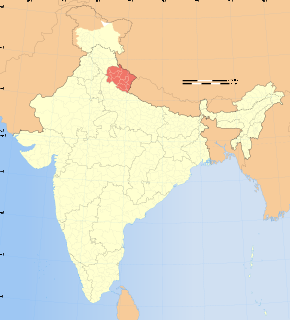
The Parliament of Pakistan is the federal and supreme legislative body of Pakistan. It is a bicameral federal legislature that consists of the Senate as the upper house and the National Assembly, as the lower house. According to the constitution of Islamic Republic of Pakistan, the President of Pakistan is also a component of the Parliament. The National Assembly is elected for a five-year term on the basis of adult franchise and one-man one-vote. The tenure of a Member of the National Assembly is for the duration of the house, or sooner, in case the Member dies or resigns. The tenure of the National Assembly also comes to an end if dissolved on the advice of the Prime Minister or by the president in his discretion under the Constitution.

Elections in Portugal gives information on election and election results in Portugal.

Since its establishment in 1947, Pakistan has had an asymmetric federal government and is a federal parliamentary democratic republic. At the national level, the people of Pakistan elect a bicameral legislature, the Parliament of Pakistan. The parliament consists of a lower house called the National Assembly, which is elected directly, and an upper house called the Senate, whose members are chosen by elected provincial legislators. The head of government, the Prime Minister, is elected by the majority members of the National Assembly and the head of state, the President, is elected by the Electoral College, which consists of both houses of Parliament together with the four provincial assemblies. In addition to the national parliament and the provincial assemblies, Pakistan also has more than five thousand elected local governments.

Elections in Zambia take place within the framework of a multi-party democracy and a presidential system. The President and National Assembly are simultaneously elected for five-year terms.

The Parliament of Ghana is the legislative body of the Government of Ghana.

The National Assembly is the legislative branch of the government of Angola. The National Assembly is a unicameral body, with 220 members: 130 members elected by proportional representation and 90 members elected by provincial districts.

General elections were held in Pakistan on 10 October 2002 to elect the National Assembly of Pakistan and the provincial assemblies. The elections were held under the watchful scrutiny of the military government of General Pervez Musharraf. This elections featured the multiparty democracy as it brought an end to the two-party system between the Pakistan Peoples Party and Pakistan Muslim League (N). A right of center Pakistan Muslim League (Q) emerged in the mainstream political spectrum of Pakistan, that supported liberal President Musharraf.

General elections were held in Zambia on 5 December 1973. They were the first elections held since the country was formally declared a one-party state in August, with the United National Independence Party (UNIP) as the only legally permitted party. UNIP leader Kenneth Kaunda was automatically elected to a third five-year term as President, and was confirmed in office via a referendum in which 88.8% of voters approved his candidacy. UNIP also won all 125 seats in the National Assembly. Voter turnout was 39% of the 1,746,107 registered voters for the presidential election, and 33% for the National Assembly election.

Bihar Assembly elections were held twice in year 2005. There was a fractured verdict in the February 2005 Assembly Election. Since no government could be formed in Bihar, fresh elections were held in October–November the same year.

Elections for the Uttarakhand Legislative Assembly in Uttarakhand state, India are conducted in accordance with the Constitution of India. The Assembly of Uttarakhand creates laws regarding the conduct of local body elections unilaterally while any changes by the state legislature to the conduct of state level elections need to be approved by the Parliament of India. In addition, the state legislature may be dismissed by the Parliament according to Article 356 of the Indian Constitution and President's rule may be imposed.
NA-67 (Jhelum-II) is a constituency for the National Assembly of Pakistan.
NA-90 (Sargodha-III) is a constituency for the National Assembly of Pakistan.
NA-92 (Sargodha-V) is a constituency for the National Assembly of Pakistan.
NA-93 (Khushab-I) is a constituency for the National Assembly of Pakistan.
NA-97 (Bhakkar-I) is a constituency for the National Assembly of Pakistan.
NA-103 (Faisalabad-III) is a constituency for the National Assembly of Pakistan. In addition to the areas of the former NA-77, the constituency represents all of Tandlianwala Tehsil apart from the town of Mamu Kanjan, which is in NA-104.
NA-104 (Faisalabad-IV) is a constituency for the National Assembly of Pakistan comprising mainly Sammundri Tehsil from the former NA-79 and the town of Mamu Kanjan in Tandlian Wala Tehsil from the former NA-78. The remaining part of Tandlian Wala Tehsil, which was previously in NA-78, is now in NA-103.

The 2016 United Kingdom local elections were held on Thursday 5 May 2016 were a series of local elections which were held in 124 local councils and also saw 4 mayoral elections in England which also coincided with elections to the Scottish Parliament, the Welsh Assembly, the Northern Ireland Assembly, the London Assembly, the London mayoral election and the England and Wales Police and crime commissioners. By-elections for the Westminster seats of Ogmore and Sheffield Brightside and Hillsborough were also held. These proved to be David Cameron's last local elections as leader of the Conservative Party and Prime Minister as he resigned two months later following the defeat of Remain in the referendum on Britain's continuing membership of the European Union which was held seven weeks later.
Elections in the Republic of India in 2018 included by-elections to the Lok Sabha, elections to the Rajya Sabha, elections to legislative assemblies of eight states and numerous other by-elections to state legislative assemblies, councils and local bodies.
The elections in India in 2019 that include general election, by-elections to the Lok Sabha, elections to the Rajya Sabha, elections to six state legislative assemblies and numerous other by-elections to the state legislative assemblies, councils and local bodies.










